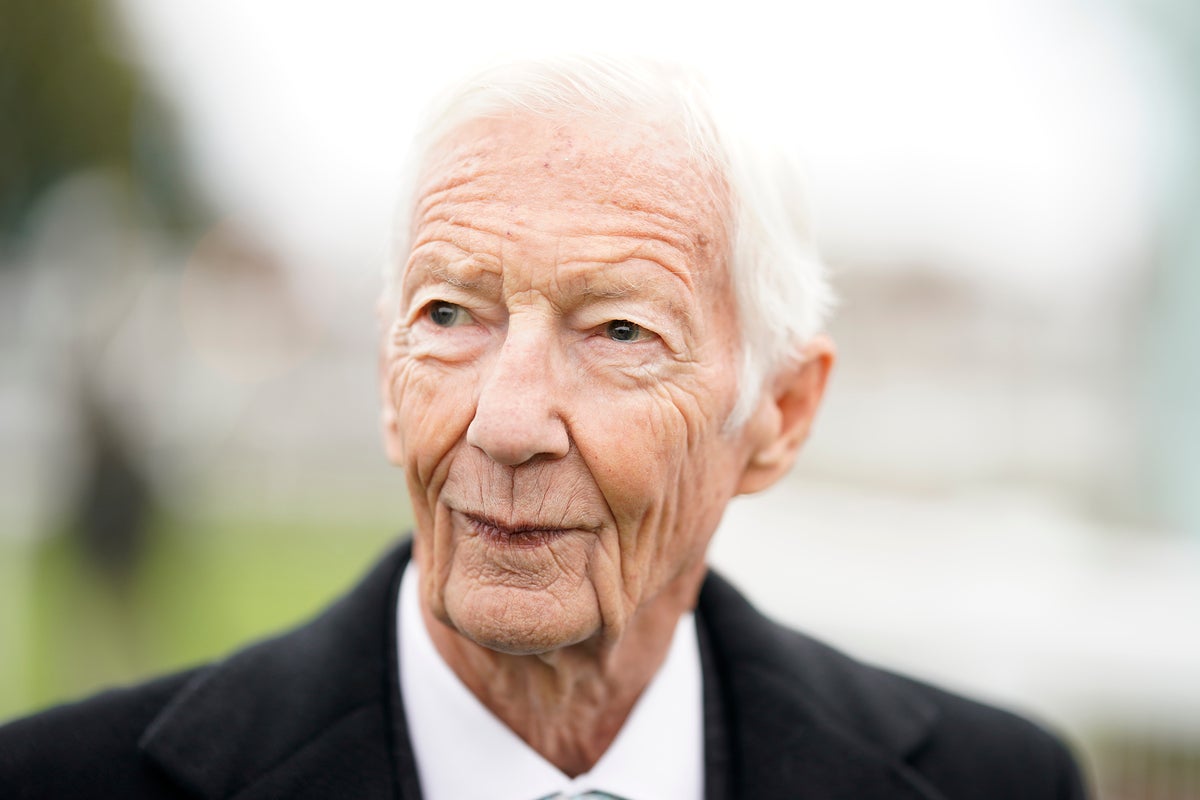
The only thing known to millions of people about the sport of horse racing is the name of Lester Piggott. To the unversed, his was the name on countless betting slips in successive runnings of the Derby. To the housewives he was the darling of the turf, his bursts of petulance serving only to draw him to their hearts. To the betting shop regulars he was a source of fascination and frustration, almost in equal measures. And to racing’s professionals he was a unique talent, a precious prodigy who triumphed in spite of a series of inborn handicaps.
It was not so much in the senses nature kept from him: his inherent partial deafness and the resultant speech impediment. It was more in what nature gave him in abundance. At five feet seven-and-a-half inches, he stood a towering six inches taller than most of his contemporaries. And at eight-and-a-half stones, he somehow maintained his body weight a full 21 pounds below its natural level. And that for forty years.
Quite simply, Lestor Piggott was never born with the physical form of a Flat-race jockey.
He developed as a result the most peculiar riding style of the lot. He always rode with the shortest length of stirrup imaginable, the long legs forcing his backside high into the air. You could always tell when he was on a winner: as his rivals abandoned their upright postures for the low crouch of a driving finish, Piggott’s motionless silhouette showed up larger still. A squeezing of the knees, a flash on the reins, a flick of the whip and he was gone.
Yet his was a much misunderstood existence for one who was essentially public property from the age of 12. There were some touching moments to go with instances of almost unbelievable brashness and deceit, none more so than his dealings with the Inland Revenue and Customs and Excise which landed him a three-year prison sentence in 1987 and a humiliating withdrawal of the Order of the British Empire accorded him 13 years earlier.
His exploits on the racetrack quickly assumed large proportions, the quite breathtaking victories often interspersed with tales of infidelity to patrons never before so tolerant of such gross disloyalty. Piggott, for his part, always insisted he had been poached by a rival owner whenever he reneged on a prior commitment.
He was never content to ride what he perceived as second best when his favoured mount was available – give or take the odd, cajoling phone call to the right people. And yet, which owner could really afford to be without him at the critical hour?
Certainly not John Galbreath, the American property magnate whose horse Roberto, Piggott had literally forced home by a hair’s breadth in the1972 Derby. Certainly not Robert Sangster, whose first Derby victory with The Minstrel in 1977 was gained in the shadow of the winning post. As the gifted Irish trainer Vincent O’Brien once put it, the worst way to approach the Derby was to have Piggott riding against you.
All this made up the Piggott psyche. It amounted to a fusion of fact, hearsay and downright fabrication, the latter allowed to run virtually unchecked in the pages of the tabloid press.
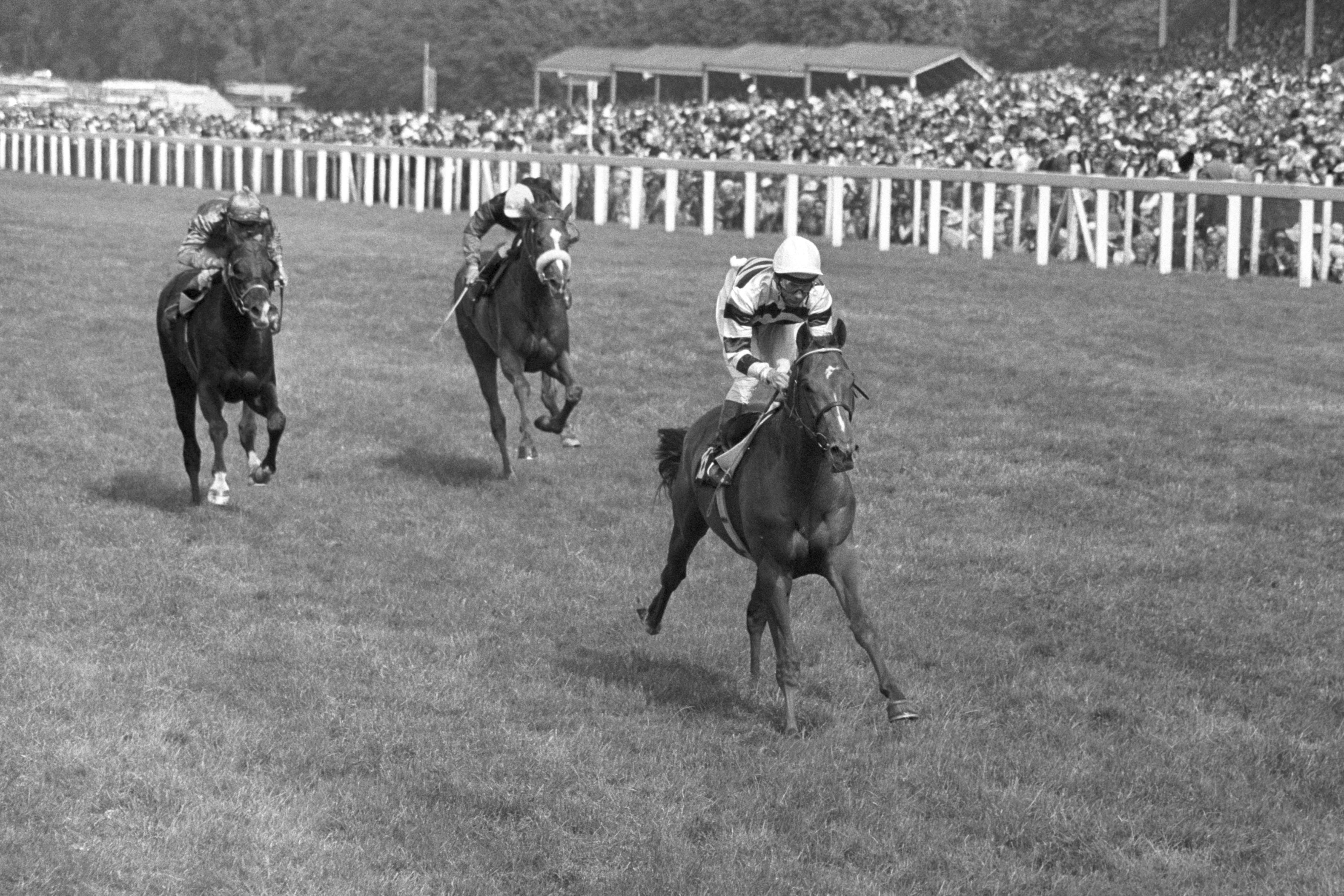
Given the colour of his career, it was fitting he was born, in 1935, on November 5 – Bonfire Night. His father, Keith, rode more than 500 winners over jumps and descended from a racing family noted for its notoriety. One of his forefathers, “Old John” Day, farmed and trained racehorses in Hampshire in the late 18th century. “Old John” spawned a dynasty that for many years was the talk of the town, such was the Days’ propensity for skulduggery excessive even by the standards of the era.
An only child, Piggott was undoubtedly influenced by his mother, Iris Rickaby, whose great-grandfather trained the 1855 Derby winner Wild Dayrell. Her father, Fred, sent out Classic winners himself and her brother, another Fred, rode Classic winners before he was killed in the First World War. Iris’s first cousin, Bill Rickaby, was himself a leading jockey until his retirement in 1968. On the face of it, there can be no blood more steeped in racing history.
In his early years Piggott would always sit with his back to guests, refusing to answer when spoken to. His mother thought nothing of it until the family doctor diagnosed his partial deafness. That he didn’t care for strangers was painfully obvious, yet it was only through his ability to lip-read that he was able to communicate at all.
So he lived in his own world, cocooned in a land of stables and galloping horses. His disability hampered his school days to the extent that he never passed a single exam in his life. But then this quiet young man, this man of thoroughbred blood, was always destined to take his place on the equine stage.
So immersed was he in this insular world that he developed a form of immunity to the emotions predominant in one of his tender years. He was riding out with his father one morning when two fighter planes collided in the air above them. Lester immediately galloped off towards the wreckage, ahead of his father, who arrived to find him staring impassively at the corpse of a pilot. After a while he turned and announced the man was dead before calmly walking away. No emotion, no fright: just a matter of fact. He was seven years old.
For a few years he boarded at King Alfred’s School in Lambourn but he became apprenticed to his father in 1948. Later that year he had ridden his first winner aboard The Chase at Haydock Park. Aged 12, standing 4ft 6in tall and weighing less than 5st, the public immediately took to him, and a nation’s love affair with its longest-serving sporting hero was well underway.
It later emerged that Piggott and The Chase had triumphed at the expense of the favourite, Prompt Corner, only because the latter’s trainer told his jockey to “stop” the horse. He had arrived too late to have a bet, and Piggott later reminisced how Prompt Corner’s jockey was screaming him on all the way up the home straight.
In the next two years Piggott’s riding prowess was firmly established. On his way to the title of champion apprentice in 1950 it also became clear he was as cut throat as they come. Following three minor suspensions he was stood down for three weeks, for riding with disregard for the safety of other jockeys. Such unbridled ambition caused him problems with senior riders, and prompted his cousin, Bill Rickaby, to declare him a menace on the track and preoccupied by money off it.
It was only a matter of time before he annexed the biggest pot of all: the Derby. The moment duly arrived when, aged 15, he won the Blue Riband with Never Say Die. However, riding the same horse in the King Edward VII Stakes at Royal Ascot, Piggott was somewhat harshly adjudged of dangerous riding, and the stewards – incensed that their numerous warnings had gone unheeded – banned him from riding indefinitely and insisted he moved away from his father’s stables. It was suggested he could re-apply for his licence after six months.
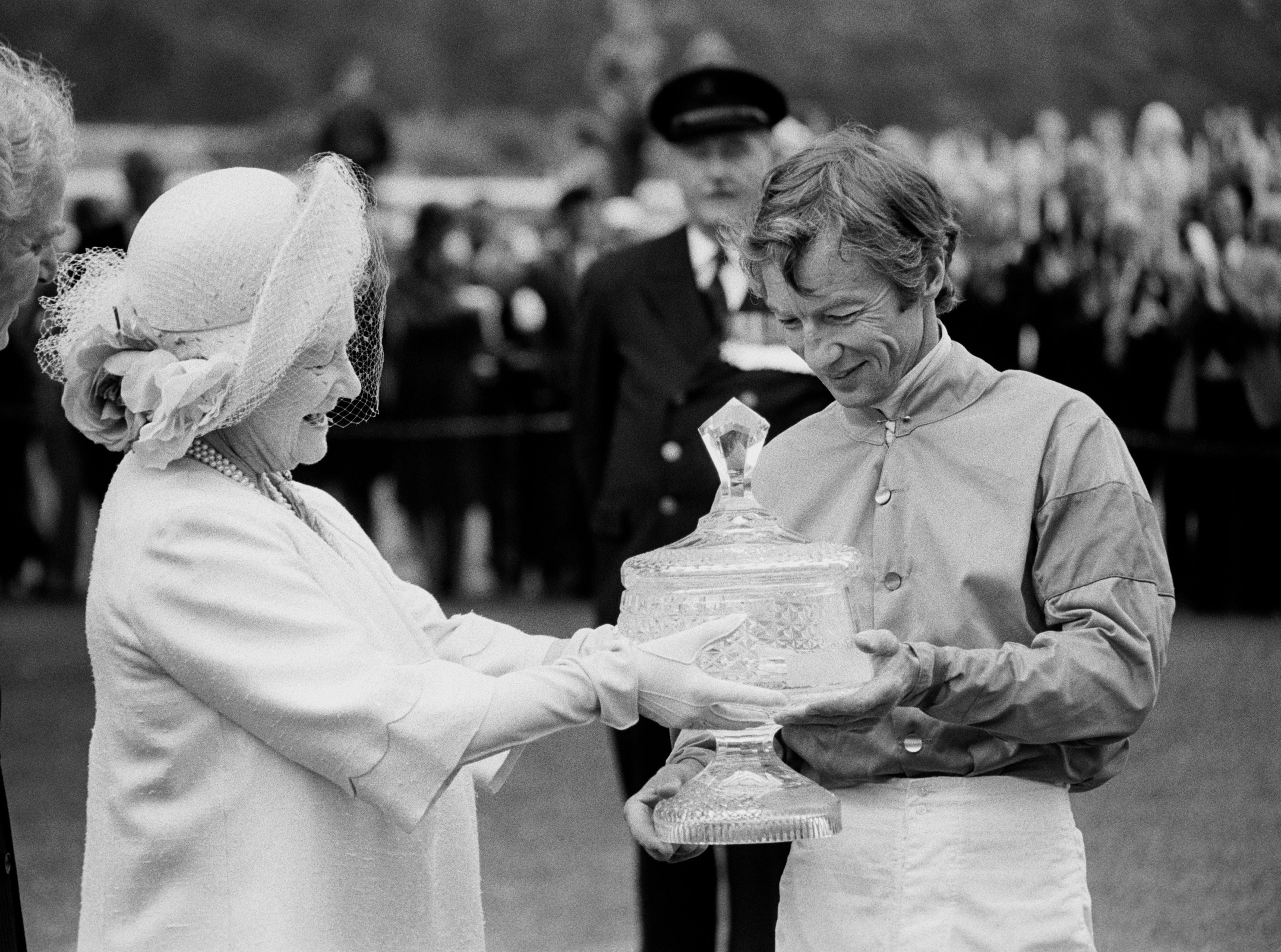
It was Sir Gordon Richards, in his twilight years as a jockey, who influenced the Ascot stewards into taking an unremitting stance with Piggott. And it was a sign of the times that Sir Gordon’s retirement after a nasty fall precipitated Piggott’s early return to the saddle. Sir Gordon was retained by the outstanding trainer Sir Noel Murless, who subsequently wanted to sign Piggott for riding duties.
The way was cleared for Piggott to end his exile in Newmarket – but not before he gave his landlady a poignant demonstration of how he hoarded his money. She returned home one day pleasantly surprised to find a bunch of flowers in a bowl, only to discover Piggott had subtracted their cost from his weekly board and lodgings.
His alliance with Sir Noel Murless cemented Piggott’s position as the country’s foremost rider. However, his weight became a constant source of concern, so much so that he had already ridden over jumps, where the minimum jockeys are asked to carry is considerably greater than on the Flat. He cut his food intake to the bare minimum, leaving himself vulnerable to bouts of depression, but his mind never wavered in its conviction that riding was his only route through life. He would suffer physically for it over the years.
The Piggott/Murless team got away to a flying start in 1955. The jockey rode more than 100 winners for the first time, and the following season he was to forge the first of many glorious partnerships with horses from Murless’s Warren Place stables in Newmarket. Owned and bred by Sir Victor Sassoon, Crepello was the first horse off the production line.
Crepello’s two-year-old season promised much, but Murless realised from the first, formative days that he was a colt with tendon problems. The trainer performed heroics in having Crepello fit enough to land the 2,000 Guineas in May, and with Piggott at his calculating best, the combination went on to rout the Derby field of 1956. The same year saw Piggott claim the third of five annual Classics on the Queen’s Carrozza in the Oaks. In Sassoon, Piggott had gained a close personal friend.
At an early age Piggott surprised his parents with his interest in the stock market. His daily read was the Financial Times, which he knew backwards. But Sassoon took Piggott’s by now considerable financial interests under his wing, and his astute dealings on Piggott’s behalf had the 19-year-old glowing with admiration. Such was the friendship between them that Piggott named his house, Eve Lodge, after Sassoon’s own stud farm. When Sassoon died Piggott never received the same quality of financial advice, and those close to him maintained it marked the turning point, the moment when Piggott’s affairs were to catch up with him with a vengeance.
In 1960 Piggott married his childhood sweetheart, Susan Armstrong, daughter of the trainer, Sam, and Maureen Greenwood. Susan was the perfect match: she, too, was heavily involved with her father’s training stables and showed little or no interest in socialising. The year saw Piggott in vintage form through the exploits of St Paddy, who gave Sassoon his fourth victory in the Derby before capturing the St Leger, the fifth and final Classic.
The headstrong St Paddy would have got the better of many a lesser man. But with Piggott the colt flourished, although one day at Sandown St Paddy took his usual fierce hold on the way to the start, prompting Piggott to point him at one of the steeplechase fences in order to slow him. This simply encouraged St Paddy to take the obstacle on, forcing his jockey to take swift evasive action lest Sassoon in the stands should turn white with fright. To cap it all Piggott ended the season as Champion jockey for the first time.
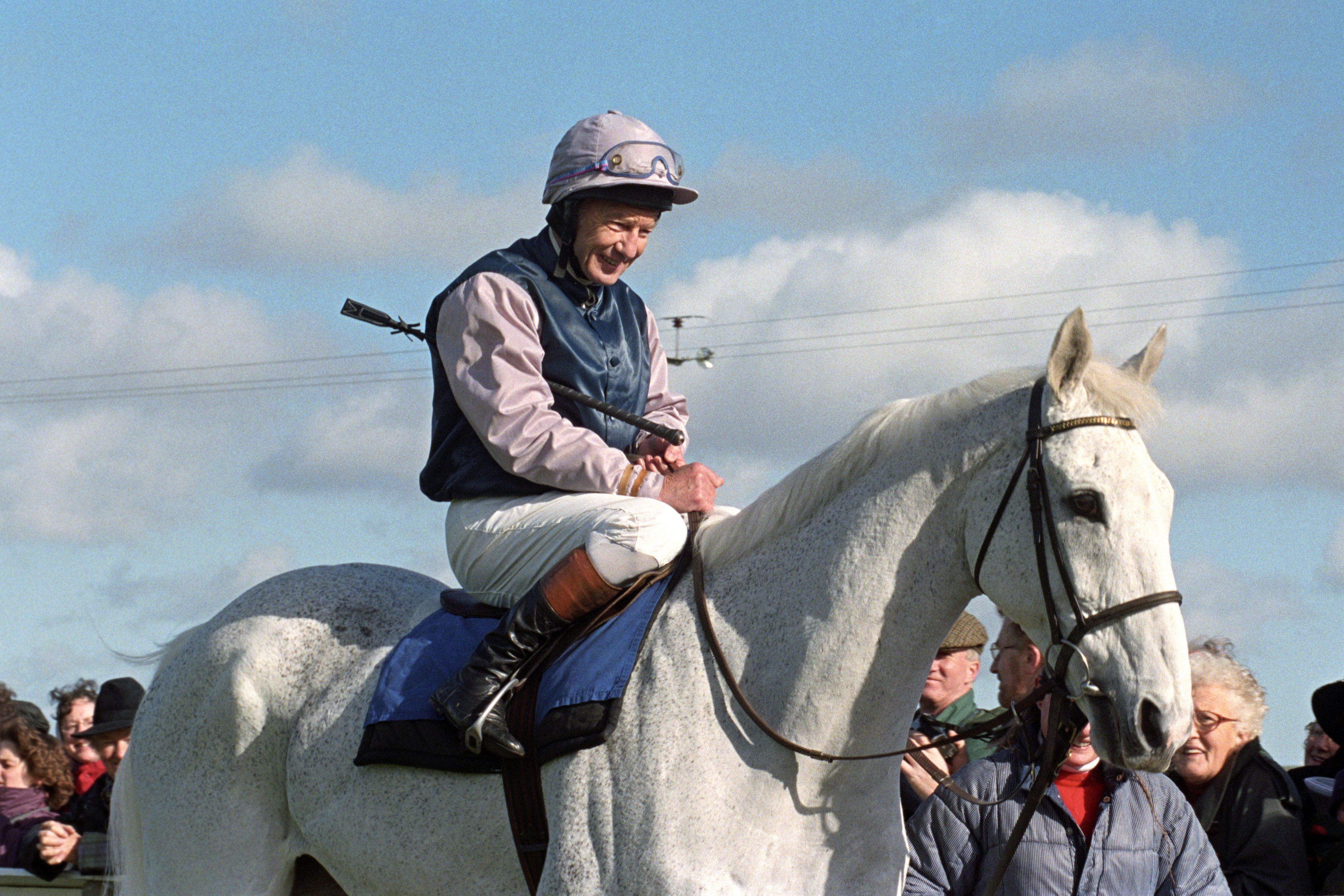
The Murless stable maintained its strength in the first half of the 1960s. However, its jockey realised there were horses trained elsewhere which would be available to him without the shackles of a contract with Murless. Already he had sensed the developing brilliance of O’Brien, and the restless Piggott was to demonstrate his desire to ride the best available in 1966.
O’Brien intended to send Valoris to England for the Oaks, in which the world presumed Piggott would be aboard the Murless-trained Varinia. Piggott duly had his way, and not for the first time, his judgement was immaculate as Valoris swept to victory. Incensed, Murless announced the partnership was over.
It was testament to Piggott’s powers of persuasion that he was back on board the Murless-trained Aunt Edith seven weeks later, the pair storming to victory in the King George VI and Queen Elizabeth Stakes at Ascot. But the wounds in Murless’s heart never properly healed: he signed George Moore for stable duties in the autumn of 1966, and with Piggott looking on, Murless dominated the following season with Jim Joel’s Royal Palace. The split with Murless cost Piggott victories in three Classics, but by that time O’Brien’s unparalleled skills were clearly evident. He only had to wait 12 months for the coming of Sir Ivor.
Having again chosen correctly – Petingo, trained by Susan’s father, was available – Piggott and Sir Ivor were simply majestic. Sir Ivor showed rare flair in the 2,000 Guineas before his jockey nursed the colt’s suspect stamina to an exquisite Derby triumph. Later in the year Sir Ivor was sent to America for the Washington DC International, run on desperately testing ground. Piggott, at his brilliant best, conjured a dazzling late burst from his partner to scythe down the leader in the dying strides.
British racegoers had witnessed this late thrust of Piggott’s and had almost come to expect it of him. For the Americans, however, the tactics were as foreign as the man to employ them. The press were scathing, particularly with the rider’s off-hand way. One pressman asked him at what stage he thought he was going to win the race, to which Piggott replied: “About three weeks ago, when they decided to send the horse over.’’
As if to silence his American critics, Piggott rode Karabas to win the same race 12 months later – the same year Nijinsky outclassed his two-year-old contemporaries in a five-race winning streak.
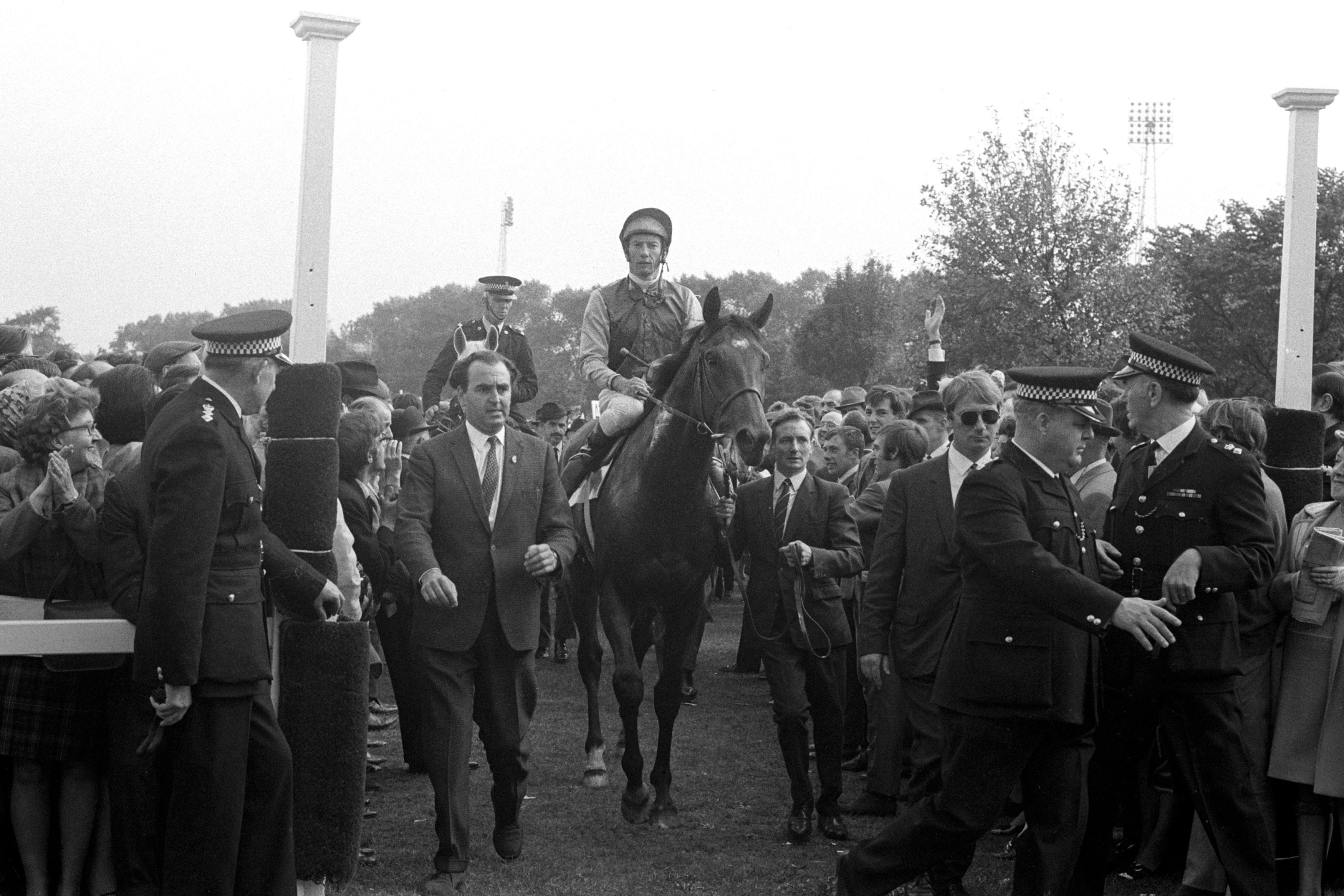
Nijinsky is one of only a few thoroughbreds whose fame has spread beyond the boundaries of the turf. He was the most imposing horse to look at: a handsome beast blessed with an ability to quicken at the end of his races.
In 1970 the dark bay colt waltzed away with racing’s Triple Crown, a feat as yet unmatched since his imperious reign. Yet it was O’Brien’s unique talents as a trainer, coupled with Piggott’s finesse, that allowed the horse to display the full range of his talent. In lesser hands the nervous, fretful Nijinsky might never have made it to the races. He might have made up one of the hundreds of thoroughbreds depressingly unable to reach the track.
Two years later it was Roberto’s turn. His last-gasp Derby victory after Piggott played his customary game of musical saddles to gain the ride heralded a fickle reception from the public. Never before – or since – has a Derby winner been booed in the aftermath, as Piggott was on unsaddling the colt. Irrespective of the fact that he had ridden one of his finest, most forceful finishes, the crowd felt he had gone too far. They found the moment they were looking for when Bill Williamson, who Piggott replaced on Roberto, rode a winner later in the day. The applause was rapturous.
Empery landed Piggott’s seventh Derby in 1976, but The Minstrel’s victory the following year signified a shifting balance of power within horse racing. Previously jockeys were treated very much like upgraded stable lads: they earned their riding fee plus the sum of a small retaining salary and precious little else.
But The Minstrel’s owner, Robert Sangster, did not take the landed gentry approach to racehorse ownership. He gave his retained jockeys a share in those horses retiring to stud – no mean deal considering what Sangster was to do to the value of bloodstock during his unchallenged blitz of the scene.
If Sangster was the instigator of such an arrangement, in was entirely fitting that Piggott was the first recipient. Jockeys were to become rich men indeed, a fact which no doubt helped to prompt Piggott’s uncharacteristic dancing on the tables at Annabel’s nightclub in London after The Minstrel’s victory.
The dual Arc de Triomphe successes of Alleged were among the last enjoyed by the O’Brien/Piggott partnership. O’Brien’s influence diminished with the onslaught of Middle Eastern patronage of British stables, even in the face of Sangster’s spirited opposition. As with many before him, O’Brien considered Piggott’s skills to be on a different level. And like many before him, O’Brien was never more anxious then when Piggott – usually forbidden from riding horses in their homework – would arrive to put the Classic hopes through their paces early in the year.
A trainer concerns himself solely with bringing a horse to a peak on a given day. He guides the horse along slowly, so that it is never asked to undertake homework at anything like racing pace. Piggott, for his part, set horses extremely stiff tests at home, totally against the trainer’s wishes. The reason? Well, he needed to know how good the horse was likely to prove. And the slightest doubt would see him scanning the horizon for a more attractive big-race prospect.
The early 1980s saw Piggott turn full circle. He was back at Warren Place, riding for Murless’s son-in-law Henry Cecil, who married Murless’s daughter Julie. Teenoso hoisted Piggott’s Derby tally to nine in 1983, but the following year Piggott burnt his bridges with the tempestuous art dealer Daniel Wildenstein, a Paris-based patron of Cecil who embraced and rejected Britain’s finest jockeys at one stage or another.
The Cecil retainer was over, but not before Piggott’s financial dealings brought racing into disrepute over the terms of his contract. All retainer fees have to be lodged with the Jockey Club, racing’s ruling body. Piggott’s was registered as £10,000, but Cecil sent out letters to all his owners stating that in addition, Piggott was to be paid an extra £45,000 in cash along with other fees over and above the standard riding percentages. The scam was exposed by a disgruntled owner, and embarrassingly, one of Cecil’s patrons was none other than the Jockey Club senior steward of the day, Lord Howard de Waldon.
Piggott retired from the saddle in 1985 to take up a training career. He had made a fair start before his world collapsed around him. Even after he was advised to reveal the workings of a network of bank accounts he refused to cooperate with a tax investigation against him. The inspectors’ late detection of 17 undisclosed accounts worth more than £2m meant a spell in prison was but a foregone conclusion.
He served a year of his three-year term. However, just as he seemed destined to wile away the years at his Newmarket home, the racing world was sent reeling when Piggott announced he was to return to the saddle at the age of 54. Within a few weeks he was at it again, galvanising Royal Academy to a quite stunning victory in the $1m Breeders’ Cup Mile at Belmont Park in New York in 1990.
The 1992 season saw him reforge the link with Sangster, whose fine colt Rodrigo de Triano possessed the talent for Piggott to be seen at his daring best. But late in the year the 56-year-old jockey was wildly thrown from Mr Brooks in a race at Gulfstream Park, his frail body prostrate on the dirt surface. He had had his share of the inevitable falls, but the gods had been kind to him thus far. This tumble, however, looked different.
With the world awaiting news of his injuries, Piggott regained consciousness. He had sustained a broken collar bone and two cracked ribs, and his instant reaction was that he would be riding again in a few weeks. News of Piggott’s fall made the front pages in America, a country only days away from the Bush/Clinton presidential election. And the Queen sent her own “get well soon” message, delivered by the British Consul in Florida, where Piggott was recuperating.
For all his roguish habits Piggott was adored by generations of seasoned racegoers and novices alike. His was a shoot-from-the-hip existence, his latest manoeuvring bringing a knowing smile to all but the scorned party. There was a raffish charm about him which made it difficult for anyone to bear grudges for too long. And there were moments when his natural generosity broke through from the rigid, cash-collecting mentality ingrained in him by his mother.
But the Piggott story has his obsession with money as its central theme; the essence of its existence. The legend in his riding days had it that he was the best, and that he was justified in touting his services as a result. Such thinking does not allow for the theme of generosity to sit alongside it; the public wanted Piggott the gunslinger, riding in and out of town.
To have the sort of ability he had is only half the equation. The other is difficult: it requires the dedication and commitment to harness that ability. Piggott had both doses in equal measures, and the turf will write many chapters before it can record one of equal riding prowess.
As for the legend, it must stand alone. Never again will there be born a man of such magnitude, such a complicated genetic mix. It was an intense passion, a ruthless dedication, a glittering career. It was bold, brash and brilliant; it was simply Lester Piggott.
He is survived by partner Barbara FitzGerald, wife Susan and their daughters Maureen and Tracy, and his son, Jamie, by his former assistant Anna Ludlow.
Lester Piggott, jockey, born 5 November 1935, died 29 May 2022







